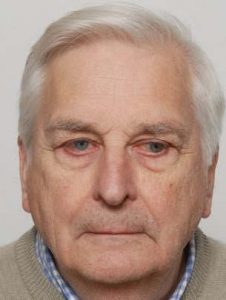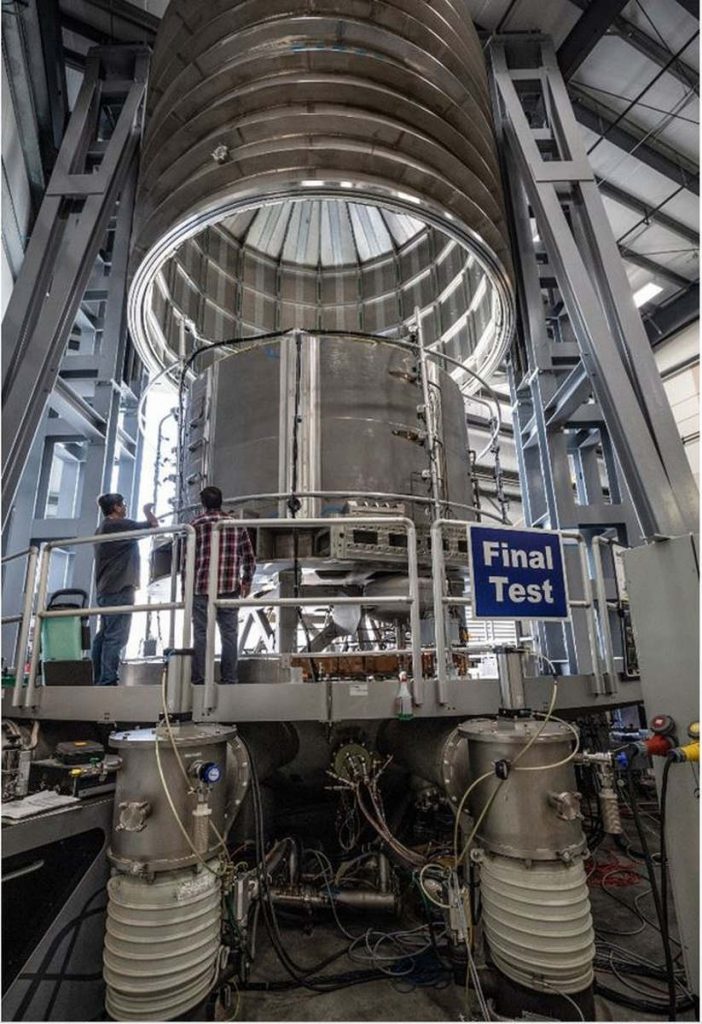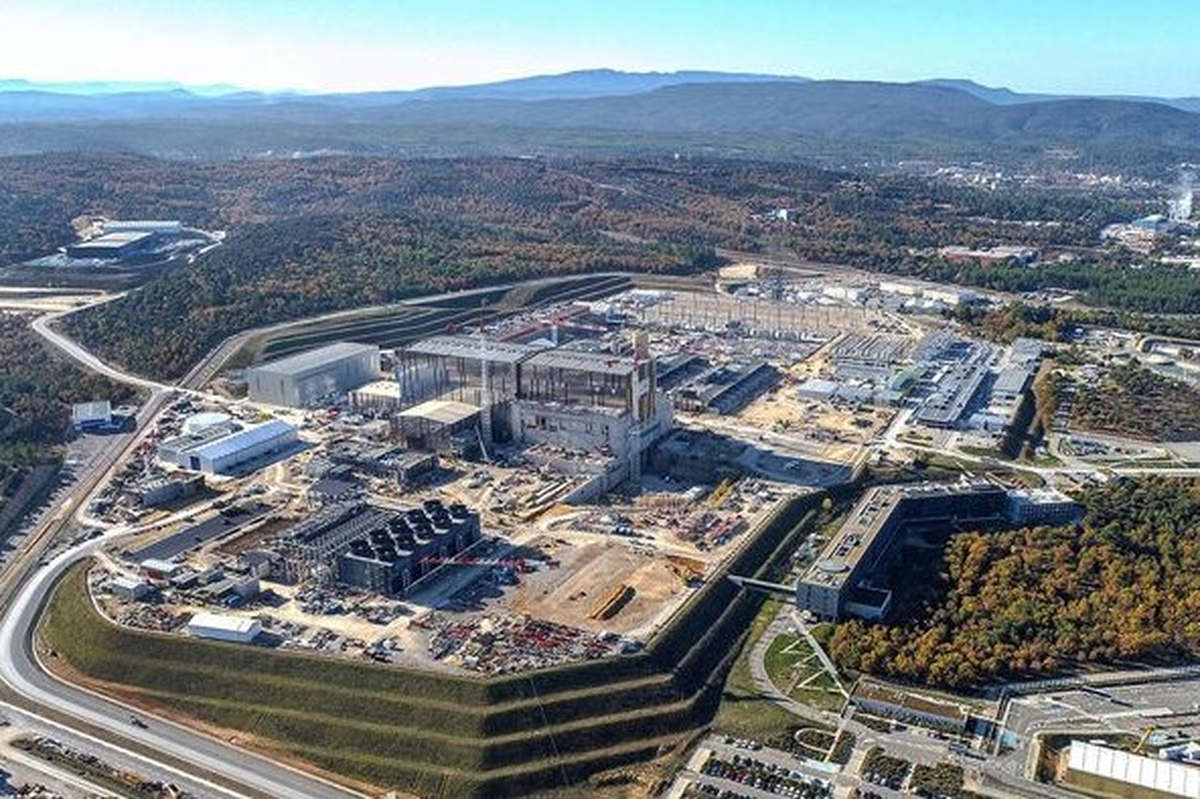ITER or the International Thermonuclear Experimental Reactor, currently under construction at Cadarache in the South of France, is getting ready to receive the biggest magnet in the world.

By Robert Harneis
No one knows how much ITER will cost. The initial budget was €5.9 billion and some estimates indicate the final bill will be €55 billion. Shared between 35 countries it is not so painful.
Begun in 2007, to no one’s surprise it is six years behind schedule and is now 78% complete. It is planned to go into operation in 2035.
Weigh 1000 tons, be 18 meters high and 4,2 meters wide
General Atomics have announced that the giant magnet designed by Magnet Technologies has begun its journey from San Diego California in the United States.
The magnet will weigh 1000 tons, be 18 meters high and 4,2 meters wide. It will be capable of an electromagnetic induction of 13 tesla or 280,000 times the world’s magnetic field. It will theoretically be capable of lifting an aircraft carrier. Known as the Central Solenoid it is a key component of the experimental tokamak reactor.
ITER’s mission is to prove energy from hydrogen fusion can be created and controlled on earth. Fusion energy is carbon-free, safe and economic.
For the past 15 months, massive first-of-a-kind components have begun to arrive in France from three continents. When assembled together, they will make up the ITER Tokamak, a “sun on earth” to demonstrate fusion at industrial scale.
The collaborating partner countries are: the European Union (plus the United Kingdom and Switzerland), China, India, Japan, Korea, Russia and the United States. Most of ITER’s funding is in the form of contributed components.
The Central Solenoid, the largest of ITER’s magnets, will be made up of six modules.
Its magnetic force is strong enough to lift an aircraft carrier 2 meters into the air. At its core, it will reach a magnetic field strength of 13 Tesla, about 280,000 times stronger than the earth’s magnetic field. The support structures for the Central Solenoid will have to withstand forces equal to twice the thrust of a space shuttle lift-off.
The Central Solenoid will play a critical role in ITER’s mission to establish fusion energy as a practical, safe and inexhaustible source of clean, abundant and carbon-free electricity.
The Central Solenoid modules are being manufactured at GA’s Magnet Technologies Center in Poway, California, near San Diego, under the direction of the US ITER project, managed by Oak Ridge National Laboratory (ORNL). Five additional Central Solenoid modules, plus one spare, are at various stages of fabrication. Module 2 will be shipped in August.

Photo credit Courtesy General Atomics.
How does fusion work?
- A small amount of deuterium and tritium (hydrogen) gas is injected into a large, donut-shaped vacuum chamber, called a tokamak.
- The hydrogen is heated until it becomes an ionized plasma, which looks like a cloud.
- Giant superconducting magnets, integrated with the tokamak, confine and shape the ionized plasma, keeping it away from the metal walls.
- When the hydrogen plasma reaches 150 million degrees Celsius—ten times hotter than the core of the Sun—fusion occurs.
- In the fusion reaction, a tiny amount of mass is converted to a huge amount of energy (E=mc2).
- Ultra-high-energy neutrons, produced by fusion, escape the magnetic field and hit the metal tokamak chamber walls, transmitting their energy to the walls as heat.
- Some neutrons react with lithium in the metal walls, creating more tritium fuel for fusion.
- Water circulating in the tokamak walls receives the heat and is converted to steam. In a commercial reactor, this steam will drive turbines to produce electricity.
- Hundreds of tokamaks have been built, but ITER will be the first to achieve a “burning” or largely self-heating plasma.“The ITER project is the most complex scientific collaboration in history,” says Frenchman Dr. Bernard Bigot, Director-General of the ITER Organization. “Very challenging First-of-a-kind components are being manufactured on three continents over a nearly 10-year period by leading companies such as General Atomics. Each component represents a top-notch engineering team. Without this global participation, ITER would not have been possible; but as a combined effort, each team leverages its investment by what it learns from the others.”
Ground transit to the ITER
ITER will be the first fusion device to produce net energy across the plasma, meaning the fusion reaction will generate more thermal energy than the energy required to heat the plasma. ITER will also be the first fusion device to maintain fusion for long periods of time. ITER will generate 500 megawatts of thermal fusion power, more than thirty times the current record achieved on the JET tokamak in the United Kingdom at Culham.
Together, ITER’s magnets create an invisible cage for the plasma that conforms precisely to the metal walls of the tokamak.
ITER construction involves more than 1 million components, manufactured around the world. Many of these components are very large, and the Central Solenoid modules are among the heaviest. The shipping process for the massive magnets requires specialized heavy transport vehicles. The entire process for safely loading and securing the module on the truck, including preparations for lifting, will take about a week.
After loading, the module will be shipped to Houston, Texas, where it will be placed onto a ship for transport to the ITER site. The first module will head to sea in late July and arrive in France in late August. Ground transit to the ITER site will take place in early September.
“Fusion has the potential to provide safe, environmentally friendly energy as a realistic replacement for fossil fuels during this century,” says Bernard Bigot. “With a nearly unlimited global supply of fuel, it also has the potential – in complement with renewable energies – to transform the geopolitics of energy supply. I can think of no better illustration of that transformative action than the ITER project, where our U.S. partners work in close collaboration with contributors from China, Europe, India, Japan, South Korea, and Russia, as a single team dedicated to achieving the common goal of a bright energy future”.
The ITER experiment is under construction at a site in southern France, with first plasma operations scheduled for 2025. The tokamak building is the mirrored structure at center.
Photo credit Courtesy ITER Organization/EJF Riche.
